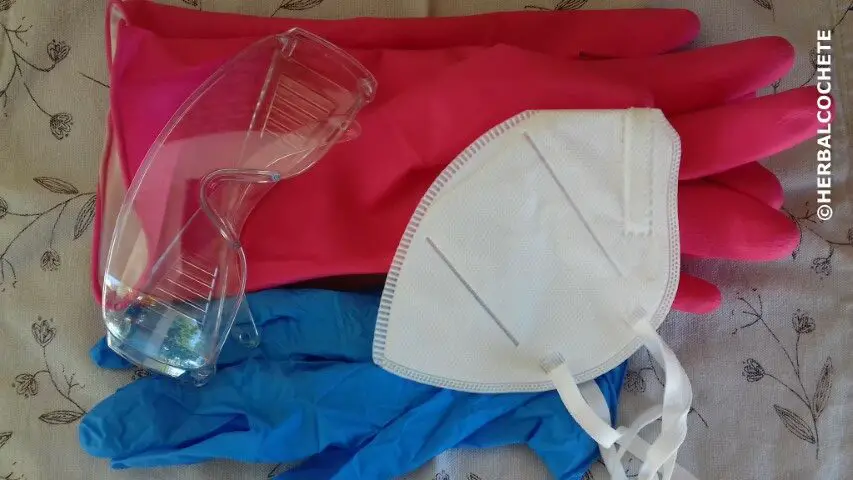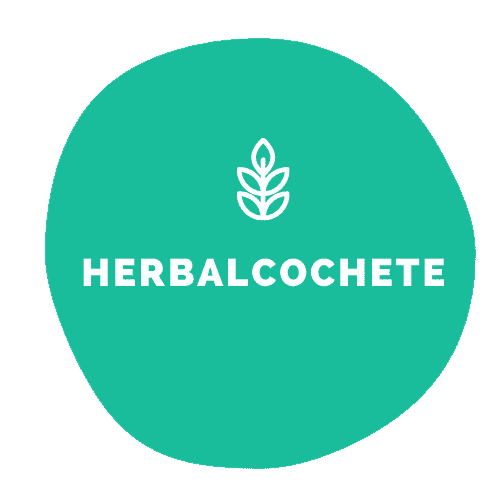Soap making safety precautions consist mostly in dealing with lye, a dangerous corrosive chemical substance, that may cause chemical burns. You should use some basic safety equipment, and wear clothes and shoes that cover you completely. Follow these safety precautions and your soap making experience will be a safe one, with only fun and pleasure to enjoy.
Please, watch this video and read the text below:
It’s always boring to read about safety precautions. However, making soap from scratch at home involves handling sodium hydroxide (lye) which can be scary – and dangerous without these precautions.
Soap Making Safety Precautions
Protect Yourself
- Lye or caustic soda is an alkaline chemical that can cause chemical burns on any exposed part of the human body. Its reaction with water also generates chemical vapors that MUST NOT not be breathed
- Always use protective goggles, protective gloves and a mask.
- Wear clothing and shoes that completely cover the skin. They can be normal clothes. I never had a problem with ruined or stained clothing after soapmaking, but it would be wise not to use your favorite blouse or shoes.
- Mix the water with lye in a ventilated place, preferably near an open window or in the outdoors. Always use your mask.
Prevent
- Always pour the lye (granules) into the water and NEVER the opposite. It can cause the lye to erupt – a volcano effect. NEVER use hot water – the volcano effect will be even worse.
- Handle soap batter always with gloves, even in solid state, for at least 48 hours. Lye is present in soap for the most part of it until saponification finishes.
- If a little bit of soap or lye involuntarily reaches a portion of the skin, wash the affected area immediately in abundant cold water. Some websites state that vinegar neutralizes caustic soda. While that is true, DO NOT attempt to use vinegar instead of running water. It takes a lot of vinegar and time to neutralize lye. Running water is much faster, and prevents your skin to get burned as it washes the lye away.
- Keep pets and children out of reach of soap batter and dirty equipment during soap production.
- Some websites state that to not use the same utensils in soap making for food. It’s a good practice, but from my experience, if you wash well your equipment, no lye will be present to harm you.
- Never use utensils in aluminium or metal. They can react with lye, destroy your equipment, and contaminate/spoil the soap. Stainless steel is the only exception.
- About plastics, many are ok as long as they are heat-resistant, but prefer silicone when possible.
Follow these safety recommendations, and you will be able to manufacture soap at home without any problem. I can safely say from two years of soapmaking experience that they are enough, and you don’t need to be afraid of lye if you follow them – just show some respect for this chemical substance.

Safety Highlights
Always wear gloves, goggles and a mask and wear clothing that completely covers your skin.
When mixing water and lye, do not breathe vapors directly. Makes it outdoors or near an open window. Always pour the lye into the water.
Do not use aluminium or metal utensils. Avoid soap making utensils in food preparation.
Keep animals and children out of the area where the soap is made.
While this is far from being the fun part of soapmaking, it’s too important to overlook. Safety precautions are necessary to make soapmaking an enjoyable experience, and not a disaster ending up in the hospital.
Always have them in mind and soapmaking will always be relaxing, fun and rewarding!
Hope you found this article useful! If you have a question or a suggestion to make, please, leave a comment below.




I didn’t know we can make our own soap. My mom would absolutely love this article. She’s always complaining about how we are always finishing the soap in the house, so if we were to make our own soap, it would help her out a lot. Thank you for this amazing article. I will definitely try it out
Hello Daniel and thanks for your comment.
Before it was made by manufacturers, soap was made by artisans for many centuries. It was considered an expensive item (I believe it was because it took a loooooong time to mix the soap batter by hand. Now with stick blneders, that process takes only minutes).
As soap and other skincare became more and more artificial (ever understood the list ingredients…? :S), some people turned into old ways and old recipes, making handmande soap… at home!! 🙂
It’s a much more natural product, and as the process is not very industrial, soap is mild and less drying than commercial one. Something called “superfat” makes handmade soap even hydrating because of the presence of vegetable oils. I am a 100% converted soap user for 2 years by now, and I don’t want other products.
Follow the links at Herbalcochete homepage at “Where to start” section, and see for yourself 🙂
Cheers,
Sofia